A comprehensive system of nails for the fixation of long bone fractures, including the femur, tibia, and humerus, designed for load-sharing and controlled stability.

A comprehensive and versatile system of intramedullary nails designed for the internal fixation of long bone fractures, including the femur, tibia, humerus, radius, ulna, and calcaneus.
These implants are engineered for optimal load-sharing, controlled axial and rotational stability, and minimally invasive surgical techniques. The system supports both reamed and unreamed procedures, ensuring adaptability to a wide range of anatomical and clinical needs. Compatible instrumentation allows for precise alignment, reliable locking options, and enhanced post-operative outcomes. Ideal for trauma, reconstruction, and orthopaedic applications requiring biomechanical strength and procedural efficiency.
Minimally invasive solution for the fixation of calcaneus fractures, ensuring stability and reduced soft tissue disruption.
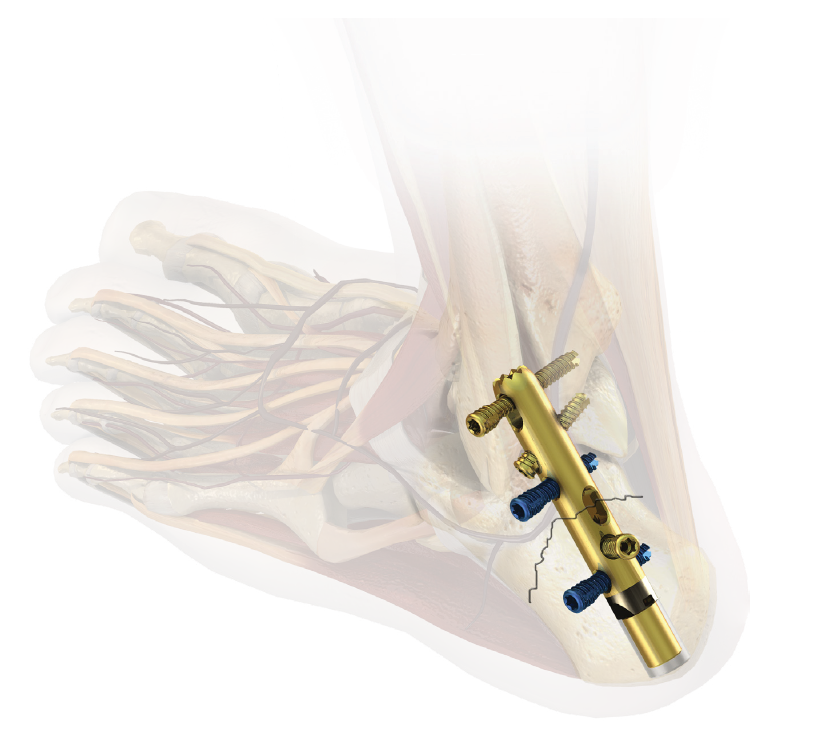
Intramedullary nail designed for the fixation of calcaneus fractures and ankle arthrodesis. Provides angular stability, controlled compression, and minimal soft tissue disruption.
The Charfix2 Calcaneal Nail system is intended for intramedullary osteosynthesis of the calcaneus. It enables stable fixation of simple, comminuted, and intra-articular fractures, as well as subtalar arthrodesis and non-union cases. The system includes implants (nail, locking screws, end cap), a dedicated instrument set, and a detailed surgical technique protocol. Available in left/right versions and a variety of lengths and diameters, the nail allows anatomical reconstruction through angular screw positioning and joint immobilization for arthrodesis. Manufactured from titanium and stainless steel alloys per ISO 5832.
Intramedullary nails for forearm fractures offering precise alignment, rotational stability, and early mobilization.
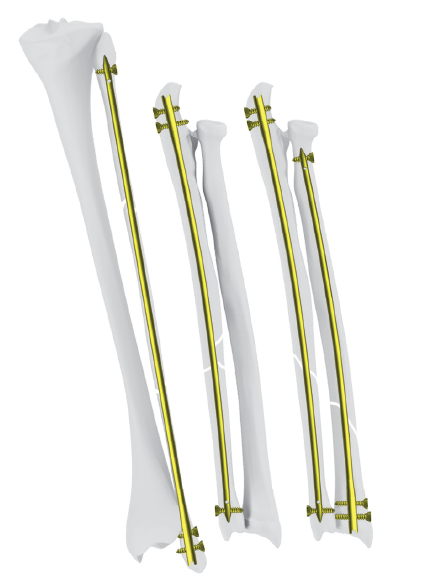
Intramedullary nail system for the stabilization of ulna, radius, and fibula fractures. Offers secure fixation for simple and complex shaft fractures with dedicated instruments.
The Charfix Fibula and Forearm Nail system is designed for the intramedullary osteosynthesis of the ulna, radius, and fibula, providing reliable stabilization in transverse, oblique, and multifragmental fractures, including those in the ankle joint region. This versatile implant system includes nails, locking and compression screws, and end caps, along with a comprehensive instrument set (ref. 40.4580.500) for insertion and extraction.
Available in diameters from Ø3 mm to Ø6 mm and lengths from 70 mm to 400 mm, these nails offer multiple configurations adapted to various bone anatomies and clinical scenarios. The nails support both distal and proximal locking with angular and axial stability. Made of titanium alloy, the system supports closed and open procedures, even in osteoporotic bone conditions.
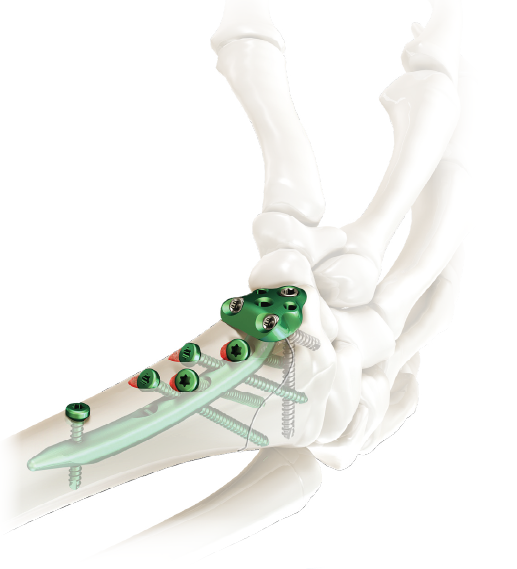
Intramedullary nail for distal radius fractures, designed to provide stable fixation with minimal soft tissue disruption and early mobilization.
The Charfix2 Radial Nail is an advanced intramedullary osteosynthesis system developed in collaboration with orthopedic specialists, specifically designed for the treatment of distal radius fractures. It offers stable fixation for AO classification types A2, A3, C1, C2, and selected C3 fractures, enabling early wrist mobility while minimizing soft tissue damage and preserving vascular supply.
The implant features a plate-integrated design, allowing multiple locking options in both the proximal and plate regions. Available in various lengths (68 mm to 103 mm), the system accommodates different anatomies and fracture patterns. The nails are made of titanium alloy per ISO 5832 standards and are accompanied by a comprehensive instrument set (15.0429.100) for precise implantation and extraction.
Load-sharing fixation for femoral shaft and subtrochanteric fractures, supporting both antegrade and retrograde techniques.

Intramedullary nail for femoral neck and trochanteric fractures. Offers angular stability and minimally invasive
The Charfix2 FN Nail is designed for the treatment of femoral neck, intertrochanteric, and subtrochanteric fractures. Its angularly stable design, combined with a cannulated structure, allows for precise, minimally invasive fixation. The system includes a cephalic screw for secure head fixation, diaphyseal locking screws, and optional compression elements to enhance fracture stability—ideal for elderly or osteoporotic patients.
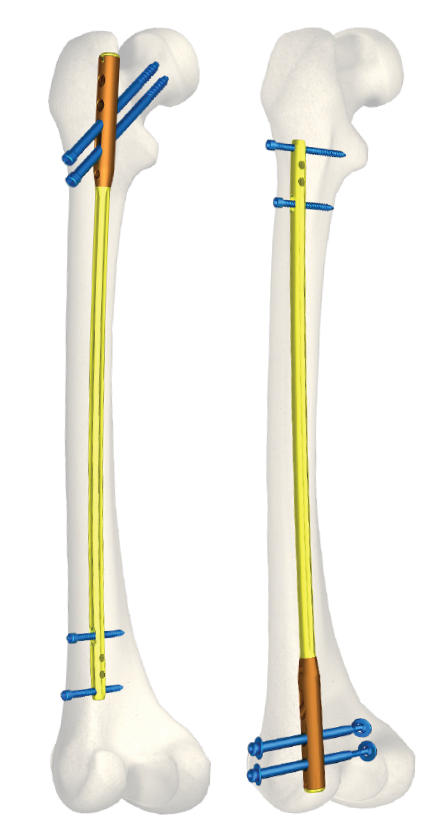
Intramedullary nail for femoral shaft and metaphyseal fractures. Provides strong fixation with multiple locking options.
The Charfix Femur Nail system is indicated for the stabilization of diaphyseal and metaphyseal femoral fractures, including segmental and comminuted types. Designed for antegrade or retrograde insertion, it offers angular and axial stability through multiple locking screw configurations. The nail is available in various diameters and lengths, and includes a full set of instruments for precise implantation. Its cannulated design allows for guided insertion and controlled fracture reduction, making it suitable for both simple and complex clinical scenarios.

Versatile intramedullary femoral fixation system designed for reconstruction, compression, dynamic, static, and retrograde techniques.
The CHARFIX Femur Nail System offers a comprehensive solution for femoral fracture stabilization using intramedullary osteosynthesis. Compatible with multiple surgical approaches—including reconstruction of proximal femur fractures, dynamic or static shaft fixation, and retrograde insertion for distal femur injuries—the system includes a full range of titanium and steel implants (nails, screws, end caps) and a dedicated instrument set (40.5090.600). Nails are available in solid and cannulated versions, with diameters from 8 to 14 mm and lengths up to 480 mm. Compliant with ISO 5832, ISO 13485 and Directive 93/42/EEC, the system ensures high biocompatibility and surgical reliability.
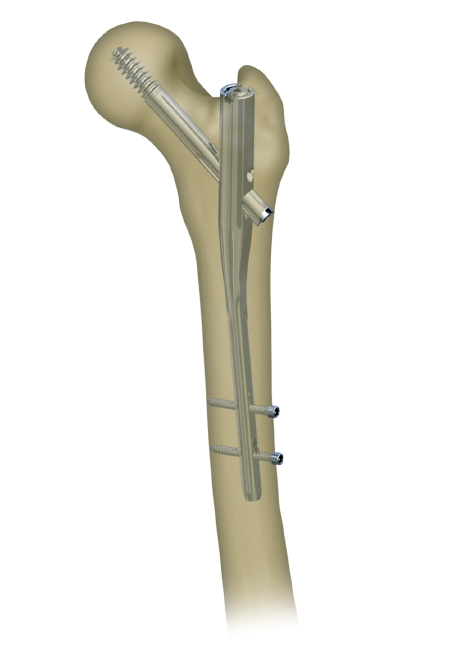
Advanced intramedullary femur nail system for versatile fixation in femoral shaft and distal fractures, with multiple locking options.
The CHFN Femur Nail System is engineered to provide secure intramedullary fixation for femoral fractures using antegrade and retrograde techniques. It includes solid and cannulated titanium nails, available in diameters from 9 to 13 mm and lengths up to 480 mm. The system supports static, dynamic, and reconstruction locking via 4.5 mm screws, with both standard and angular options. Designed for precise alignment and rotational control, the nails feature anatomical curvature and proximal threading. The dedicated instrument set (40.5520.600) enables efficient intraoperative handling. All components conform to ISO 5832 and ISO 13485 standards.
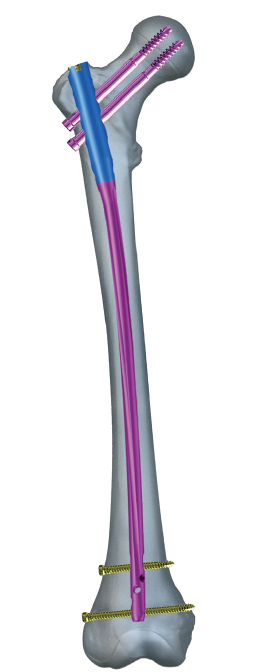
Cannulated anatomical femoral nail system for advanced stabilization of femoral fractures with optimal anatomical fit and locking flexibility.
The CHARFIX2 Femur Anatomical Nail System is a next-generation intramedullary fixation solution designed for proximal and shaft femoral fractures. Featuring a cannulated design and anatomical curvature, it enables accurate insertion and optimal alignment. Nails are available in diameters from 9 to 13 mm and lengths from 260 to 420 mm. The system supports reconstruction, dynamic, and static locking via 5.0 mm screws, with distal locking options in both standard and angular configurations. The dedicated instrument set ensures efficient handling and precise control during surgery. All components meet ISO 5832 and ISO 13485 requirements.
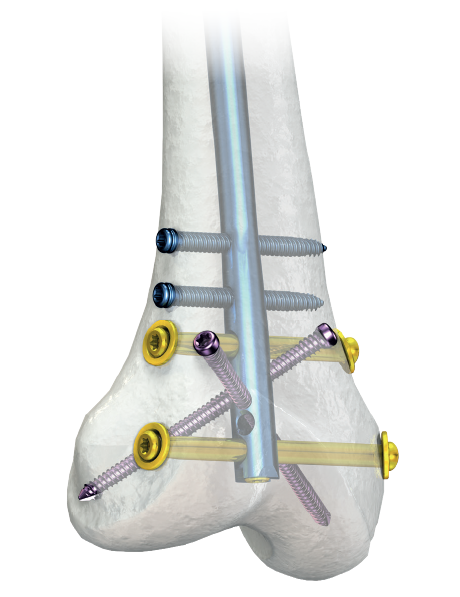
Cannulated condylar nail system for distal femoral fractures, offering angular stability and precise anatomical alignment.
The CHARFIX2 Femur Condylar Nail System is a specialized intramedullary fixation solution for distal femoral fractures. Designed for retrograde insertion, the nails feature anatomical curvature and cannulated design, enhancing precision and minimally invasive application. Available in diameters of 9 to 13 mm and lengths from 260 to 420 mm, the system supports angular, dynamic, and static locking with 5.0 mm screws. Distal locking options enable multiplanar stability. The dedicated instrument set ensures safe and efficient procedures. All components comply with ISO 5832 and ISO 13485 standards, ensuring surgical reliability and biocompatibility.
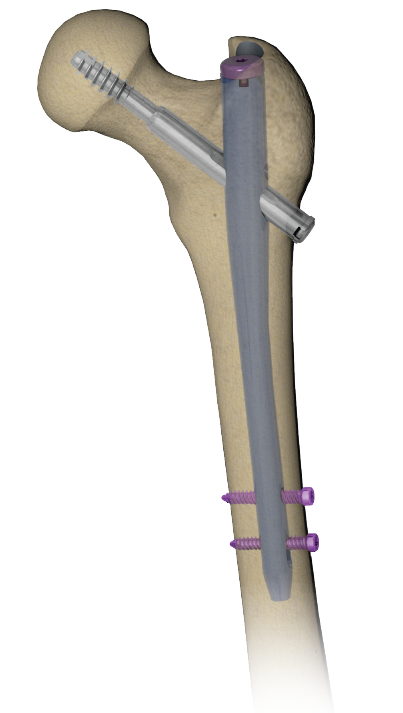
The CHFN2 Femur Nail System is optimized for retrograde intramedullary osteosynthesis of distal femur fractures. It includes solid and cannulated nails in diameters ranging from 9 to 13 mm and lengths from 260 to 480 mm. Designed for high mechanical strength and anatomical adaptation, the system allows static, dynamic, and angular locking via 5.0 mm screws. Nails feature multiple distal holes to enable optimal screw placement in complex fracture patterns. Compatible with dedicated instrumentation (40.6340.500 / 40.6340.510), the system is compliant with ISO 5832 and ISO 13485 standards.
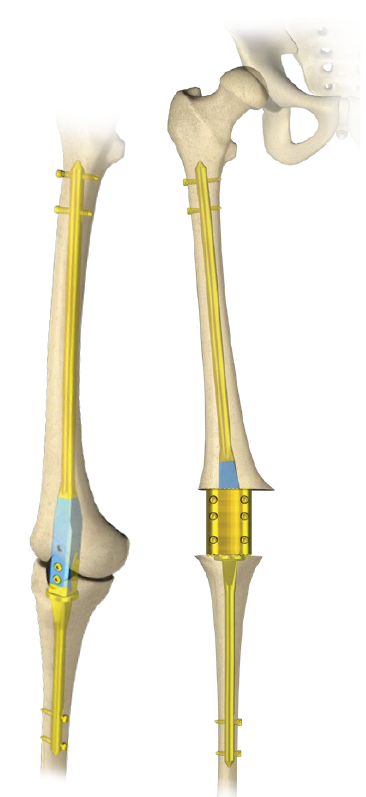
Proximal femoral nail system for intertrochanteric, subtrochanteric, and combined fractures with high biomechanical stability.
The CHARFIX2 FN Nail System is a specialized intramedullary solution for proximal femur fractures, including intertrochanteric, subtrochanteric, and complex combined patterns. The system features cannulated and solid titanium nails, anatomically curved for optimal alignment and rotational control. Available in diameters from 9 to 13 mm and lengths up to 480 mm, it supports multiple locking configurations, including angular locking through helical blades and 6.5 mm femoral neck screws. The system is designed for minimally invasive surgical techniques and is compatible with the 40.6530.600 instrument set. All components comply with ISO 5832 and ISO 13485 standards.
Intramedullary nailing systems for the humerus designed to provide stable fixation, anatomical alignment, and minimally invasive surgical options for proximal, diaphyseal, and distal humeral fractures.

The CHARFIX Humeral Nail System is designed for the treatment of humeral fractures across the proximal and diaphyseal regions, including complex or combined patterns. It offers titanium solid and cannulated nails with diameters from 6 to 10 mm and lengths from 180 to 320 mm. The anatomical curvature and targeted locking options—static, dynamic, and angular—enhance alignment and rotational stability. Locking is achieved using 4.5 mm cortical screws and 6.5 mm cancellous screws for metaphyseal fixation. The dedicated instrument set (40.5010.600) enables minimally invasive surgical techniques and precise nail insertion. All components comply with ISO 5832 and ISO 13485 standards.
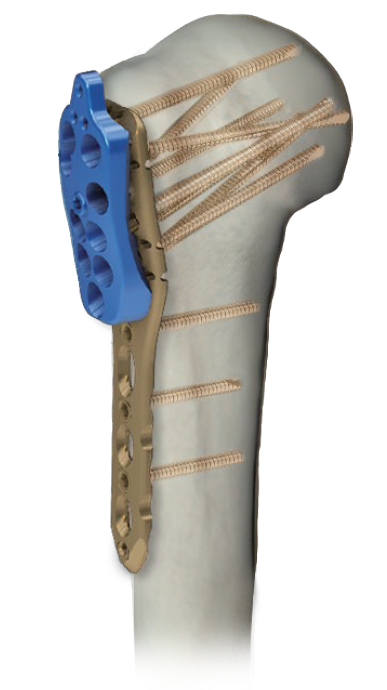
anatomical reconstruction and angular-stable fixation of proximal humeral fractures, including displaced fractures, osteopenic bone, osteotomies, and mal/non-unions. The plate allows precise reduction while preserving blood supply through limited bone contact.
It includes 9 locking holes in the proximal area and shaft holes for standard cortical or locking screws (Ø3.5 mm, self-tapping), ensuring multi-directional screw placement for varied fracture configurations.
Compatible with Kirschner wires and suture fixation for initial stabilization. Implant materials comply with ISO 5832 standards and are available in titanium and cobalt-chromium alloy.
The system uses dedicated instruments (Set 40.5667.700), with full support for minimally invasive insertion and compression techniques.
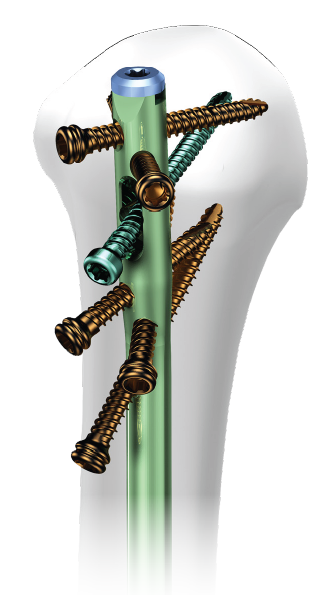
The CHARFIX2 Humeral Nail System provides intramedullary fixation for a wide range of humeral fractures, including proximal, diaphyseal, and complex multi-segment patterns. Cannulated and anatomically curved titanium nails are available in diameters from 6 to 10 mm and lengths from 180 to 320 mm. The system supports multiple locking configurations—static, dynamic, and angular—using 4.5 mm cortical and 6.5 mm cancellous screws. The dedicated instrument set (40.5880.600) enables minimally invasive techniques and guided nail insertion for enhanced alignment and fixation control. All components meet ISO 5832 and ISO 13485 quality standards.
Intramedullary tibial nails designed for stable, minimally invasive fixation of diaphyseal and metaphyseal fractures.
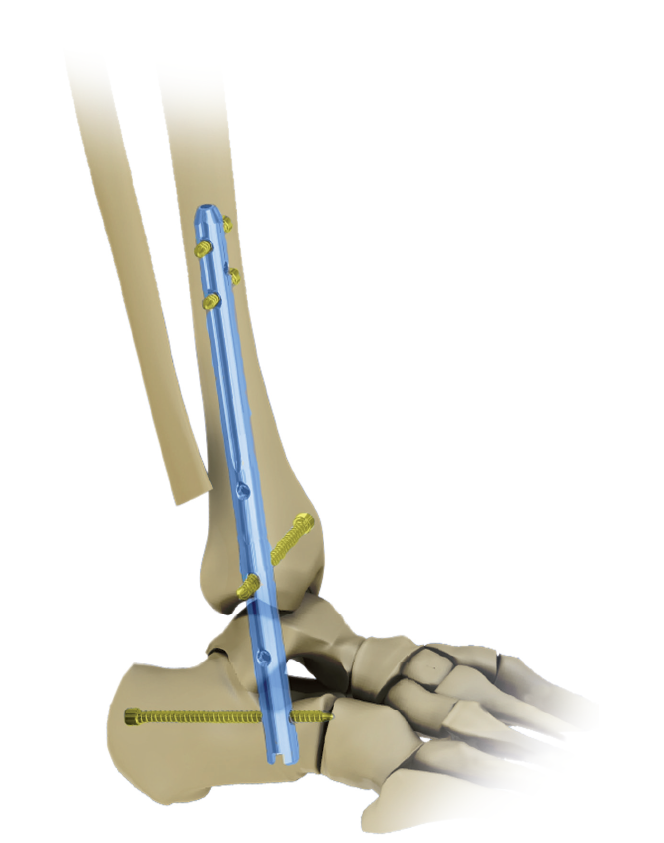
The CHARFIX Retrograde Tibial Nail enables stable retrograde fixation of the tarsus and distal tibia in cases such as tibiocalcaneal arthrodesis, rheumatoid arthritis, talocalcaneal necrosis, and severe deformities. It features:
Solid or cannulated nail options
Diameters from Ø8 to Ø14 mm (1 mm increments)
Lengths from 130 mm to 400 mm (5 mm increments)
Locking holes for both proximal and distal fixation (up to 6 locking holes)
Compatible with multiple targeters and a dedicated instrument set (40.5000.600)
End cap to prevent bone ingrowth into the nail
Surgical technique includes lateral and plantar approaches, medullary canal reaming, and guided or free-hand locking. The system supports both titanium and stainless steel nails.

Multiple fixation modes: static, dynamic, compressive, reconstructive, and oblique
Locking via round and oval holes using CHARFIX2 screws (4.0–5.5 mm)
Cannulated or solid options
Nail diameters Ø8–Ø14 mm (1 mm increments)
Lengths from 210 mm to 600 mm (5 mm increments)
Use with instrument sets 40.5300.500 and 40.6560.000
End cap and compression screw options for proximal closure
Proximal and distal locking can be performed with targeters or freehand technique under X-ray guidance. The system allows intraoperative compression and angular stability.
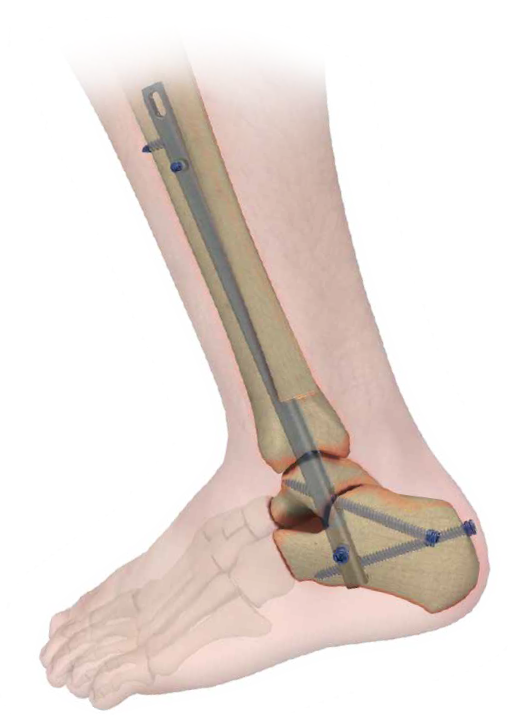
Intramedullary nail system designed for retrograde osteosynthesis of the distal tibia and tarsus. Indicated for tibiocalcaneal and talocrural arthrodesis, complex deformities, advanced osteoarthritis, non-unions, and failed ankle replacements.
The CHARFIX2 Tibial Retrograde Nail by ChM is intended for stable intramedullary fixation of the tarsus and distal tibia. This system enables retrograde insertion through the calcaneus, facilitating arthrodesis of the talocrural and talocalcaneonavicular joints. Made of titanium alloy or implant-grade steel, the implant supports a broad spectrum of indications, including severe ankle and foot deformities, rheumatoid arthritis, and revision surgeries. Compatible with instrumentation sets [40.5300.500] and [40.5380.500], the system allows secure locking in the talus, calcaneum, and proximal tibia, with options for compression and angular stability.

Intramedullary titanium or stainless steel nail designed for retrograde osteosynthesis of the distal tibia and tarsus. Indicated for complex arthrodesis, deformities, necrosis, and post-traumatic conditions. Available in solid and cannulated versions, Ø8–Ø14 mm, lengths 130–400 mm.
The CHARFIX Retrograde Tibial Nail enables stable retrograde fixation of the tarsus and distal tibia in cases such as tibiocalcaneal arthrodesis, rheumatoid arthritis, talocalcaneal necrosis, and severe deformities. It features:
Solid or cannulated nail options
Diameters from Ø8 to Ø14 mm (1 mm increments)
Lengths from 130 mm to 400 mm (5 mm increments)
Locking holes for both proximal and distal fixation (up to 6 locking holes)
Compatible with multiple targeters and a dedicated instrument set (40.5000.600)
End cap to prevent bone ingrowth into the nail
Surgical technique includes lateral and plantar approaches, medullary canal reaming, and guided or free-hand locking. The system supports both titanium and stainless steel nails.

Projecting Health to the Next Level.
We are dedicated to the distribution of top-tier medical technologies designed to improve patient clinical outcomes.